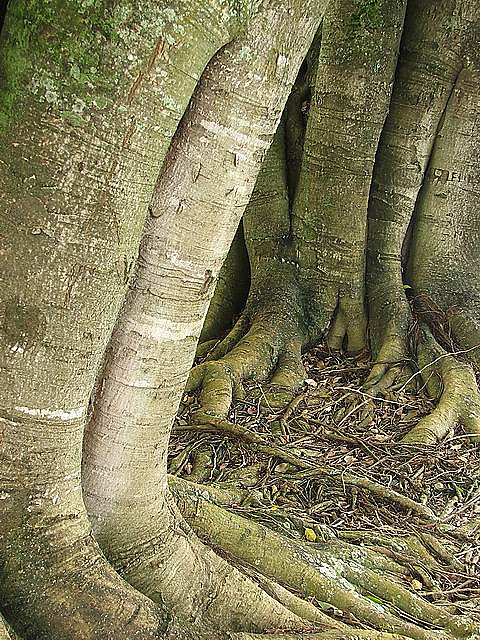For the last two weeks of December I’ll be reprinting some of our favorite blog posts instead of putting up new ones. These will be on those evergreen topics that we can always revisit and apply to current projects. As this year winds down, hopefully some of these will be helpful as you plan for the one to come. Today’s post is from Marcy Bean, a sustainable landscape architect with the Kestrel Design Group -LM
There is a lot of discussion going around about the benefits of creating shared soil volumes for urban trees — in other words, connecting the rooting areas of two or more trees. Do they benefit? Do they not? In my mind, a shared soil volume is kind of like living in an apartment with a friend. You may each have your own bedroom, but the overall space accessible to you is bigger than what you’d have if you lived alone. Is this idea totally off track? I did a little online research to see what real studies might be out there on this topic.
There are a number of contrasting research papers and opinions, primarily based on research of annual crops. These are obviously not quite the same as studying trees, but available research thus far has been limited. In general, the most pertinent are the following general topics:
- Some plants are allelopathic, meaning one plant inhibits the growth of another. Chemicals between the plants just don’t mix. So, if you planted incompatible species in one streetscape, and provided a shared soil volume, their roots could adversely affect those of the other trees.
- In many studies[1], shared soil volumes are considered space for root competition, one plant stealing nutrients from another. Some plants over-produce roots to beat out the competition for nutrients, and then don’t spend the energy in the part of the plant that is above ground.
- And, like my roommate idea, others hypothesize that two plants that share space have more total available volume than two plants confined by a divider to half the space. Plants that share rooting space give protection to one other from exposure and impact. These plants tend to be more vigorous.
Overall, I struggled to find a clear winner in the shared soil volume debate. I also don’t understand exactly how we’d translate this into understanding of trees rather than annual crops.
Then I stumbled upon the Landscape Journal article “Soil Volume and Tree Condition in Walt Disney World Parking Lots.” [2] Authors analyzed over 1,100 trees planted in parking lots at Walt Disney World, looking at species, soil volumes, and tree condition. Ultimately, two factors affected the condition of the trees: soil volume, and whether a tree was planted individually or as a group. It was determined that 1,500 ft3 of soil was needed to ensure their trees would be in good condition, and planting trees in a group rather than individually appeared to benefit at least one tree species.
This is a very simplified conclusion, but the research is compelling. It is an interesting analysis of minimum soil volumes, tying back to theoretical and empirical volume recommendations from the last few decades. I will be keeping my eyes open for other research specifically related to shared soil volumes for trees. If you know of any, send them our way!







Leave Your Comment